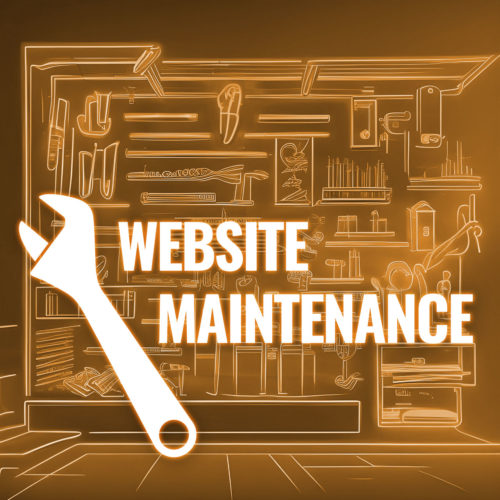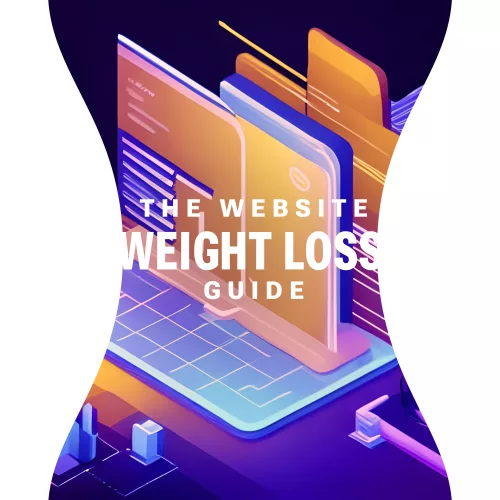
Web designers and developers are constantly seeking ways to streamline their workflow and create stunning websites more efficiently. This is where front-end frameworks and libraries come into play, offering a plethora of tools and resources to level up your web design game. By harnessing the power of these versatile tools, you can enhance your productivity, unleash your creativity, and build exceptional websites with ease.
Front-end frameworks and libraries provide a solid foundation for web design projects, allowing you to leverage pre-built components, responsive layouts, and cross-browser compatibility. They offer a wide range of ready-to-use styles, templates, and functionalities, enabling you to rapidly prototype and develop robust websites. Whether you are a seasoned web designer or just starting out, these tools can significantly boost your efficiency and elevate the quality of your work.
By using front-end frameworks and libraries, you no longer need to reinvent the wheel with each project. Instead, you can focus on crafting unique and engaging user experiences, without getting bogged down by repetitive tasks. These tools abstract away the complexities of web development, providing intuitive APIs and comprehensive documentation, making it easier for designers of all levels to create modern, responsive, and visually appealing websites.
Understanding Front-End Frameworks and Libraries
Front-end frameworks are comprehensive, pre-designed libraries of HTML, CSS, and JavaScript components that facilitate rapid web development. They provide a structured and standardized approach to building websites, streamlining the design and coding process. By incorporating a set of reusable UI components, such as buttons, forms, navigation menus, and grids, frameworks offer a solid foundation that promotes consistency and saves valuable development time.
Frameworks and libraries bring numerous advantages to the table. One of the primary benefits is accelerated development speed. By leveraging pre-built components and templates, designers can quickly prototype and assemble interfaces, significantly reducing the time and effort required to create a polished website. Additionally, these tools promote consistency in design and code, ensuring a cohesive user experience across different pages and devices.
Many libraries and frameworks also support responsive web design out of the box. They offer responsive grids, media queries, and CSS classes that automatically adapt the layout and appearance of websites to fit various screen sizes and resolutions. This flexibility is crucial in today’s mobile-dominated landscape, where users access websites from a wide range of devices, from smartphones and tablets to desktop computers.
Additionally, these tools help address cross-browser compatibility issues. Frameworks and libraries implement CSS resets, normalization techniques, and browser-specific workarounds, ensuring consistent rendering across different web browsers. This saves developers from the arduous task of manually fine-tuning their code to work seamlessly across various browser environments.
Exploring Popular Front-End Frameworks and Libraries
When it comes to front-end frameworks, several options have gained significant popularity in the web design community. Let’s dive into some of the most widely used frameworks and explore their features, capabilities, and real-world applications.
- Bootstrap, developed by Twitter, is arguably the most popular front-end framework to date. It provides a comprehensive set of CSS and JavaScript components, making it easy to build responsive and mobile-first websites. Bootstrap offers a grid system, pre-styled UI components, responsive utilities, and a wealth of customization options. It is suitable for a wide range of projects, from simple landing pages to complex web applications.
- jQuery is a JavaScript library whose widespread adoption and versatility make it a valuable asset for web designers. jQuery simplifies tasks like DOM manipulation, event handling, and AJAX requests, allowing developers to write concise and efficient code. Its extensive plugin ecosystem further extends its capabilities, offering solutions for various UI components, animations, and interactive features. With its intuitive syntax and wide-ranging support, jQuery remains a valuable tool for web designers seeking to enhance their projects with interactive and dynamic elements.
- Angular, developed by Google, is a full-featured front-end framework that enables the development of robust and scalable applications. It provides a comprehensive set of tools and features for building complex web projects. Angular follows the component-based architecture and uses TypeScript as its programming language. It offers features like two-way data binding, dependency injection, and powerful routing capabilities.
- React, developed by Facebook, is a JavaScript library widely known for its component-based architecture. It allows you to build reusable UI components and efficiently manage their state. React’s virtual DOM (Document Object Model) enables faster rendering and efficient updates, making it ideal for building complex and interactive user interfaces.
- Materialize CSS is inspired by Google’s Material Design principles. It provides a rich set of components, animations, and styles that enable developers to create modern and visually appealing interfaces. Materialize CSS is known for its ease of use and offers a comprehensive documentation.
These are just a few of the front-end frameworks available, but they come equipped with a rich set of features and capabilities, enabling designers to expedite the web development process while maintaining a professional and polished outcome. By leveraging these frameworks, you gain access to a ready-made toolkit of UI components, responsive grids, and CSS styling options, allowing you to focus on crafting engaging user experiences rather than reinventing the wheel.
Front-end libraries such as these offer a wide range of use cases, from building simple interactive elements on a webpage to developing complex single-page applications. They provide the building blocks necessary to create engaging user experiences, streamline development processes, and improve overall productivity.
Streamlining Web Design Workflow with Frameworks and Libraries
Front-end frameworks and libraries are not only powerful tools for creating visually appealing and interactive web designs, but they also offer numerous benefits when it comes to streamlining your web design workflow. In this section, we will explore how these tools can enhance your productivity and make the development process more efficient.
- Enhancing Productivity
Front-end frameworks and libraries provide a foundation of pre-built components, styles, and functionality that can significantly reduce development time. Instead of starting from scratch, you can leverage these tools to kickstart your projects and focus more on customizing and fine-tuning the design to meet your specific requirements. By using established patterns and best practices offered by frameworks and libraries, you can avoid reinventing the wheel and speed up the development process. - Templating Systems and Component Libraries
Many front-end frameworks and libraries come with their own templating systems and component libraries. These allow you to create reusable and modular code components, enabling efficient development and easier maintenance. Templating systems provide a structured approach to designing layouts and organizing content, ensuring consistency across your website. Component libraries offer a collection of pre-designed UI elements that can be easily integrated and customized, saving you time and effort in designing and styling common interface elements. - Integration with Build Tools and Task Runners
Front-end frameworks and libraries can seamlessly integrate with popular build tools and task runners such as webpack, Gulp, or Grunt. These tools automate repetitive tasks, such as bundling and minifying CSS and JavaScript files, optimizing image assets, and live-reloading the browser during development. By incorporating frameworks and libraries into your build process, you can harness the power of automation and streamline your workflow, allowing you to focus more on design and functionality.
By utilizing front-end frameworks and libraries, you can simplify your web design workflow, increase productivity, and deliver projects more efficiently. These tools provide a solid foundation and offer a wide range of resources, documentation, and community support, which can further enhance your development experience.
Best Practices for Using Front-End Frameworks and Libraries
To make the most of these powerful tools in your web design projects, it’s important to follow some best practices. These practices will help you choose the right framework or library, balance customization with maintenance and updates, and stay up-to-date with the latest releases and best practices.
- Choosing the Right Framework or Library
When selecting a front-end framework or library, consider the specific requirements of your project. Evaluate factors such as the project’s complexity, scalability, and desired functionality. Research and compare different options based on their features, documentation, community support, and compatibility with your existing tech stack. Consider the learning curve associated with each option and the availability of resources and tutorials. - Balancing Customization with Maintenance and Updates
Front-end frameworks and libraries offer a wide range of customization options, allowing you to tailor your design to your specific needs. However, it’s important to strike a balance between customization and the long-term maintenance and updates of your project. Avoid excessive customization that could lead to difficulties in upgrading to newer versions or maintaining compatibility with future releases. Follow best practices and adhere to the established conventions of the framework or library to ensure easier maintenance and smoother updates. - Staying Up-to-Date with New Releases and Best Practices
Frameworks and libraries are continuously evolving, with new features, enhancements, and bug fixes being released regularly. It’s crucial to stay up-to-date with these releases and the best practices associated with them. Subscribe to newsletters, follow relevant blogs and social media accounts, and actively participate in developer communities to stay informed about the latest updates and developments. Regularly update your chosen framework or library to benefit from improved performance, security patches, and new features.
Potential Challenges and Considerations
While front-end libraries offer numerous advantages, there are some challenges and considerations to keep in mind. By addressing these challenges and following best practices, you can optimize performance, minimize code bloat, and ensure accessibility in your web design projects.
When working with frameworks and libraries, some common challenges may arise. These include a steep initial learning curve, potential limitations in customization, and increased file sizes due to the inclusion of framework-specific code. It’s important to allocate time for learning and familiarizing yourself with the chosen tool to maximize its potential.
Strategies for Optimizing Performance and Minimizing Code Bloat
To optimize performance when using front-end frameworks and libraries, consider the following strategies:
- Evaluate and remove unnecessary dependencies or features to reduce the overall file size and improve loading times.
- Minify and compress your CSS and JavaScript files to minimize their size.
- Utilize code splitting and lazy loading techniques to load only the required components and resources.
- Optimize images and assets by compressing them without compromising quality.
- Implement caching mechanisms and utilize Content Delivery Networks (CDNs) to improve response times.
Accessibility Considerations when Working with Frameworks and Libraries
Accessibility is a crucial aspect of web design. When using front-end frameworks and libraries, it’s essential to ensure that your designs are accessible to all users. Consider the following:
- Use semantic HTML elements appropriately and apply proper labeling to make your content accessible to screen readers and assistive technologies.
- Ensure that interactive elements and components are keyboard accessible and have appropriate focus states.
- Test your designs for color contrast and provide alternative text for images to accommodate users with visual impairments.
- Follow accessibility guidelines and best practices provided by the framework or library you’re using.
If you take the time to address these challenges and considerations upfront, you can mitigate potential issues and create web designs that are performant, lightweight, and accessible to all users.
Start Building
As you’ve seen, front-end frameworks and libraries play a vital role in modern web design, offering numerous benefits that can enhance your development process and improve the overall user experience. Using these libraries, you gain access to pre-built components, responsive grids, and powerful JavaScript libraries that expedite development and ensure consistency across projects. These tools empower you to build visually stunning and feature-rich websites while maintaining code organization and scalability.
Now it’s time to explore, experiment, and embrace the vast landscape of front-end frameworks and libraries. By immersing yourself in their features and functionalities, you can elevate your web design projects to new heights. So, dive in, stay curious, and let these tools empower you to create exceptional web experiences.


